|
https://ift.tt/2MrIxQV
5 Facebook Tools to Optimize Your Facebook Ad Campaigns https://ift.tt/2YxV9fO Want better results from your Facebook ads? Looking for ways to optimize your ads? In this article, you’ll explore five free Facebook tools to help you improve your Facebook ads’ performance. #1: Facebook Creative Hub ToolThe creative you use in your Facebook ads has a huge impact on ad performance. No matter how good your offer or copy is, if your ad creative doesn’t grab your audience’s attention in the news feed, you’re unlikely to get any traction. Facebook’s Creative Hub is designed to help you improve your ad creative and build winning ads. It lets you:
Here’s how to start taking advantage of these features to improve your Facebook campaigns. Create an Ad Mockup in Creative HubTo access Creative Hub, go to the global menu in Facebook Ads Manager and select Creative Hub.
From here, you can create a mockup of an ad and share it with anyone who has access to your ad account. Click Create Mockup and select the ad type/platform you want to create.
Now build your mockup. After you click Save, you have the option to send the mockup to your mobile news feed to review or if you’re satisfied with it, import the ad into Ads Manager to use it in a campaign. How to Use Video Marketing to Increase Your Influence, Visibility, and Sales—Online Training!
The Manage Mockups tab is where you manage, delete, and share your mockups. You can view your mockups next to each other grid style or in the typical Facebook list format.
The View Formats tab allows you to navigate among the different ad formats for mobile and review specs, guidelines, examples, and creative ideas for each placement.
Assess the Text in Your Facebook Ad ImageOn the Tools tab, you’ll find two testing tools for analyzing your ad creative. The Image Text Check tool ensures your images fall within Facebook’s recommended 20% text rule and assesses whether the text on your images may impact ad performance.
Run a Split Test With Your Facebook VideoNot sure which video will perform better for you? The Video Testing tool allows you to run a 72-hour split test on your Facebook videos. Facebook will help you determine which video receives better engagement and watch times.
With a video split test, you can test up to five different videos at once. You’ll need to add your Facebook page and ad account and provide some basic targeting details. Facebook requires you to spend a minimum of $400 per video mockup over a 72-hour period to determine the results of the test. Get Creative Inspiration From Other BrandsClick the Get Inspired tab to view a gallery of ads in different formats from some of the world’s leading brands, showcasing how they’ve creatively used the ad formats on smaller screens and displays. You can browse all formats or select the placements you need some inspiration for.
#2: Facebook Audience Insights ToolAudience Insights isn’t a new tool, but the functionality and data available have changed considerably over the last year. Facebook has tightened up access to insights and removed custom audience insights, financial data, and data collected from certain third parties. Audience Insights still allows two very powerful functions for gaining a better understanding of saved audiences. To get started with Audience Insights, decide if you want to profile a saved audience made up of all users on Facebook or just profile the people connected to your page. Note that Facebook needs a large amount of data to be able to provide accurate insights, so pages with fewer than 10,000 followers may not be eligible to view certain insights. Once you’ve selected your customer demographic info in the left-hand column, here are the two places that can reveal the most about your audience. Activity TabThe Activity tab shows you how likely your audience is to perform a certain activity (represented by dark blue) and compares it against the average number of times everyone on Facebook performs that activity over 30 days (represented by light gray). In the example below, you can see that women in the 18-35 age group in Australia are likely to click on an average of 24 ads on Facebook over 30 days. This is higher than the average of all Facebook users clicking on ads (which is 19 times over 30 days). This information can help you see how likely an audience is to respond to Facebook ads.
Page Likes TabThe Page Likes tab shows which pages in certain categories your selected audience is most likely to engage with. If your audience likes restaurants, it shows which brands they like the most. If they read magazines, it reveals which magazines they like.
You can also see which Facebook pages your audience is most likely to find relevant or show an affinity for, versus all of the other pages on the platform.
Knowing what your audience responds to on Facebook allows you to research other pages they like for creative ideas, ad examples, and content ideas. #3: Facebook Test and Learn ToolSplit testing your Facebook campaigns is essential to understanding how best to optimize your ads. But because Facebook ads have so many moving parts, coming up with fair and equal testing can be tricky. It’s also difficult to know what to test and how to interpret the results. Facebook’s Test and Learn tool helps you define and quantify testing with a series of standard split tests. Facebook will then deliver the results of the test to you, along with recommendations for future campaigns.
Now let’s look at the tests you can run using the Test and Learn tool. Conversion Lift: This test evaluates all of your active Facebook ad campaigns and identifies which campaigns are producing the largest uplift in a conversion event like purchases or app installs. Facebook recommends running this test over 4 weeks and optimizing for a minimum of 100 conversions during that period. Brand Recall or Brand Lift: Facebook will survey the users exposed to your brand awareness campaign and survey them to see how much they’ve noticed your ads, are aware of your brand, like your brand, or have your brand top of mind over other brands in your industry. A brand recall test needs a minimum spend of $14,000 over 30 days. 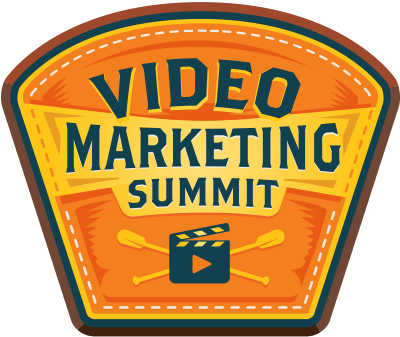
Get Video Marketing Training—Online!The Video Marketing Summit is ideal for any marketer who wants to increase their visibility, influence, and sales with video. Twelve of the world’s top video marketing experts will show you how to do this on Instagram, Facebook, YouTube, and LinkedIn. The Video Marketing Summit is a live online training event from your friends at Social Media Examiner. CLICK HERE TO LEARN MORECampaign Optimization: This test compares two active Facebook campaigns and shows you which one is driving the most conversions or the lowest-cost conversions.
On the Learn tab of the Test and Learn tool, you can see your active test including any split tests you’ve set up.
These tests will help determine the overall effectiveness of your campaigns and which campaigns are creating the most brand awareness or conversions. However, because they require larger budgets and set guidelines for certain tests, they might not be suitable for all advertisers. #4: Facebook Ads Manager Split Test ToolFacebook Ads Manager allows you to build a split test when you set up an ad campaign with the Traffic, App Installs, Lead Generation, Conversions, Video Views, Catalog Sales, Reach, Engagement, Messages, and Brand Awareness objectives. Within these objectives, you can test audience, delivery optimization, placements, creative, and product sets as variables. When using the split test feature, Facebook will randomly split your audience and ensure there’s no overlap. Facebook will then test which variable performs best over a set time period between 1 and 30 days. It’s recommended that you run a split test for at least 4 days. Once the results are in, you’ll receive a notification within Ads Manager or an email with the results. To create a split test for a new campaign, choose your campaign objective and then select the Create Split Test option.
From the drop-down menu, choose the variable you want to test.
Once you’ve selected your variable, continue to build your campaign as normal, selecting your audience and delivery options. When setting a budget for a split test, Facebook recommends a budget based on the “power” to deliver an effective test result for you. If your budget is too low, Facebook won’t be able to test enough of your audience and determine a result. Facebook assigns a power percentage to your test as you set the budget. A power percentage above 80% is recommended.
Create the variable as you build the ad. When the creative is the variable, as in the example below, Facebook guides you to create two separate ads: Ad A and Ad B.
Facebook then sets up two ad sets to test the campaign with and identifies the ads sets and campaigns involved with split testing with a test tube icon next to the ad set.
Remember: It’s important not to edit, optimize, or change a split test campaign once it’s started or it will affect the results and not allow you to gather useful data. #5: Facebook Campaign Budget Optimization ToolWith Campaign Budget Optimization, instead of allocating a budget per ad set on Facebook, you assign a total campaign budget. Facebook then optimizes your budget and spends it with the best performing ad set to reach your goal. This is currently an optional setting, but starting in September 2019, it will become the default setting and you won’t be able to change it. Facebook explains that when you create a campaign, it knows better where the opportunities are in real time across your ad sets. So allowing Facebook to optimize your budget can deliver better results. Currently, to opt into Campaign Budget Optimization when creating your campaign, choose your campaign objective and then select the Campaign Budget Optimization option. You can still decide whether you want a daily or lifetime spend for your campaign and which bid strategy to use.
When building out the ad set, you’ll see that the budget section has already been assigned. However, you can add a spend limit to that ad set if you want.
Unlike with a split test, Facebook doesn’t declare a winner with campaign budget optimization. It continually updates and optimizes the campaign spend across ad sets to get the maximum number of results based on your objective and bid strategy. ConclusionBefore using any of these Facebook tools, it’s a good idea to prepare and follow some best practices to ensure you’re using the right type of test to optimize your ad campaigns and get useful data to help you make your next decision. Start by thoroughly reviewing your current Facebook campaigns and identifying areas where you might be missing out. That might be a low click-through rate, poor relevance score, poor conversion value, or another negative result. Then create a hypothesis to test and base your optimization and testing around that. For example, if your ad has a high click-through rate but isn’t driving conversions, what could be the cause and what types of tests could you run to help you optimize this? If the ad is receiving a lot of attention but little traction, it might indicate the creative is strong but the objective or audience isn’t aligned. If so, what can you test to see if you can improve the conversion value? Be sure to test one thing at a time. If you try to change the audience, creative, and placement all at once, it will be difficult to determine what did or didn’t work when the results change. Be structured in your approach to testing. You need to give your tests enough time and budget to generate sufficient data. As frustrating as it can be when your ad campaigns aren’t performing, you need to allow enough time and budget to learn from your testing and optimization. Think of the money you’re spending as an investment in data to make better decisions. Finally, keep testing. Markets, trends, audiences, and social platforms are always changing, so adopting a good process for testing and optimizing your campaigns is key to keep delivering optimal performance. Always testing, learning, and tweaking your campaigns for the best performance is a must-have skill for marketers. Utilize the Facebook tools available to you to help understand more about your market, audience, and ads and then adjust and optimize accordingly. When you find results or a positive ROAS, that’s the time to scale. Then repeat this process for each and every campaign. What do you think? Which of these tools could help you improve your Facebook campaigns? Share your thoughts in the comments below. More articles on Facebook ads:Get your 2020 tickets! There are 17 tracks of content available from the world's top marketing pros! Social Media via Social Media Marketing | Social Media Examiner https://ift.tt/1LtH18p July 31, 2019 at 05:03AM
0 Comments
https://ift.tt/2K5b6SC
The dreaded 10x, or, how to handle exceptional employees https://ift.tt/2MswDq6 The “10x engineer.” Shudder. Wince. I have rarely seen my Twitter feed unite against an idea so loudly, or in such harmony. I refer of course to the thread last month by Accel India’s Shekhar Kirani, explaining “If you have a 10x engineer as part of your first few engineers, you increase the odds of your startup success significantly” and then going on to address, in his opinion, “How do you spot a 10x engineer?” The resulting scorn was tsunami-like. The very concept of a 10x engineer seems so… five years ago. Since then, the Valley has largely come to the collective conclusion that 1) there is no such thing as a 10x engineer 2) even if there were, you wouldn’t want to hire one, because they play so poorly with others. The anti-10x squad raises many important and valid — frankly, obvious and inarguable — points. Go down that Twitter thread and you’ll find that 10x engineers are identified as: people who eschew meetings, work alone, rarely look at documentation, don’t write much themselves, are poor mentors, and view process, meetings, or training as reasons to abandon their employer. In short, they are unbelievably terrible team members. Is software a field like the arts, or sports, in which exceptional performers can exist? Sure. Absolutely. Software is Extremistan, not Mediocristan, as Nassim Taleb puts it. Social Media via Twitter – TechCrunch https://techcrunch.com July 30, 2019 at 12:38PM
https://ift.tt/2LP2LVs
Real estate platform Compass raises another $370M on a $6.4B valuation en route to an IPO https://ift.tt/331E9xI The real estate market regularly goes through ups and downs, but today comes big news for a startup in the space that has built a platform that it believes can help all players in it — buyers, sellers, and those who help with the buying and selling — no matter what stage of the cycle we happen to be in. Compass — a company that has built a three-sided marketplace for the industry, along with a wide set of algorithms to help make it work — has raised a $370 million round of funding, money that it plans to use to continue expanding to more markets, as well as for more tech and product development. Sources tell me that it’s also now eyeing up an IPO, likely sometime in the next 24 months. “From day one we knew, when we had just a small amount of people at the company, we had a very clear focus,” co-founder and chairman Ori Allon said in an interview. “We wanted to bring more tech and data and transparency to real estate, and i think it’s paid off.” Based out of New York, Compass earlier this year established an engineering hub in Seattle run by the former CTO of AI for Microsoft, Joseph Sirosh. It’s continuing to hire there and elsewhere (alongside also making acqui-hires for talent). The Series G funding — which brings the total raised by Compass to $1.5 billion — is coming in at a $6.4 billion valuation, a huge uptick for the company compared to its $4.4 billion valuation less than a year ago. Part of the reason for that has been the company’s massive growth: in the last quarter, its revenues were up 250% compared to Q2 2018. The investor list for this latest round includes previous investors Canada Pension Plan Investment Board (CPPIB), Dragoneer Investment Group, and SoftBank Vision Fund. Other backers since it was first founded in 2012 have included Founders Fund, the Qatar Investment Authority (a construction and real estate giant), Fidelity and others.
The company was co-founded by Ori Allon and Robert Reffkin — respectively the chairman and CEO, pictured here on the right and left of COO Maelle Gavet. The company first caught my eye because of Allon. An engineer by training, he has a string of notable prior successes in the field of search to his name (his two previous startups were sold to Google and Twitter, which used them as the basis of large areas of their search and discovery algorithms). In this latest entrepreneurial foray, Allon’s vision of using machine learning algorithms to improve decisions that humans make has been tailored to the specific vertical of real estate. The platform is not a mere marketplace to connect buyers to real estate agents to sellers, but an engine that helps figure out pricing, timing for sales, how to stage homes (and more recently how to improve them with actual building work by way of Compass Concierge) to get the best prices and best sales. It also helps real estate agents manage their time and their customers (by way of an acquisition it made of CRM platform Contactually earlier this year). Starting with high-end homes for private individuals, Compass has expanded to commercial real estate and a much wider set of price brackets. There is a wide opportunity for vertical search businesses at the moment. People want more accurate and targeted information to make purchasing decisions; and companies that are in the business of providing information (and selling things) are keen for better platforms to bring in online visitors and increase their conversions. I understand that this has led to Compass getting approached for acquisitions, but that is not in the blueprint for this real estate startup: the longer term plan will be to take the company public, likely in the next 24 months. “It has been incredible to see the growth of our Product & Engineering team, including the addition of Joseph Sirosh as CTO,” said Compass Founder & Executive Chairman Ori Allon, in a statement. “We are excited to partner with new investors, and deepen our relationship with our existing partners to accelerate our growth and further our technology advancements.” Social Media via Twitter – TechCrunch https://techcrunch.com July 30, 2019 at 08:44AM
https://ift.tt/2MlLbrv
How to Get More Social Media Engagement on Any Platform https://ift.tt/2YegEmv Want to improve your engagement on social media? Wondering how to keep the conversation going with your followers? In this article, you’ll discover how to get your audience to engage with your social media posts, videos, and live videos. The 3 Rules of Social Media EngagementBefore jumping into the tips, let’s make sure you’ve got the right baseline. There are three rules of engagement you must follow. Without this foundation, nothing else will work. Be Consistent
It’s a trust thing. Why would they show up for you if you’re not showing up for them? It’s also a habit thing. Creating a habit with your audience is the key to success. If you and your friends make plans to have dinner “sometime this week,” what are the chances you’ll all show up at the same day and time? Very slim, right? This is why there’s a defined day, time, and place when we make plans in real life. The same must be true of your content. You’re making plans with a group of people. They’ll put it on their schedule and their calendar to show up Monday at 8 AM if (and only if) you’re consistently showing up at that time, too! Ask Specific QuestionsToo often, marketers think they’re asking for engagement when, in fact, they’re not. If you’re not getting super-specific with your request for people to comment, chances are they won’t. If you say something like, “Let me know what you think about that,” it’s not going to drive a lot of action. Instead, you want to say, “Do you think I’m right or wrong about this? Leave a comment right now and tell me—let’s discuss it!” People are busy and distracted. Yes, they’re probably multitasking while watching your video or reading your post. So be sure to take their distraction into account and give them specific instructions. How to Use Video Marketing to Increase Your Influence, Visibility, and Sales—Online Training!
Include an Element of FunIt’s time to kill the professional attitude. I’m all for a professional look (quality matters), but never a professional attitude. Avoid the stiff, old-school business way of talking and being. That’s so 1970. What works today is personality. A sense of fun and your unique personality is what will drive engagement more than anything else because people don’t engage unless they enjoy the content or feel something about it. Learning is good. Having fun while learning is even better!
6 Tips for Social Media EngagementOkay, now that we’ve got the foundation down, let’s move on to ways you can increase your engagement even more. #1: Create a Club-Like ExperienceThe intrigue of a club is the exclusivity factor, right? Well, your community should feel like a club. When people feel special, they’re more likely to show up and engage. Make people feel like they’re a part of something bigger than themselves. One way you can do this is to name your audience. Jill and Josh Stanton at Screw the Nine to Five do a fantastic job with this. Their community is called Scroupies (Groupies of The Screw). Jill will refer to Scroupies in her content, as you can see in the post below. The community will refer to themselves as Scroupies. And it lends itself to more conversation because they have an identity… and those who aren’t a part of the insider club yet feel the need to join in. Another way you can create a club-like experience is by repeating themes throughout your content. I often use the phrase “YOUniquely You” in my content. It’s a recurring theme I use to help people integrate their unique personality into their content and stop being afraid of being fully authentic. What happens is people identify with a theme, so over time, you don’t have to say anything—people will bring the theme up themselves in comments. They’ll educate new viewers. They’ll use the theme conversationally. See how having an insider club experience will get you more natural engagement?
#2: Encourage Conversation With Audience TriggersTo get the kind of engagement that comes on its own (in other words, you don’t have to work so hard for it), you want to tap into audience triggers. These audience triggers have nothing to do with pain points, as you might be thinking. They also have zero to do with the topic of your content or your primary value. Triggers tap into personal likes/dislikes of your audience. They turn valuable, educational content into a conversation piece. Let’s look at some examples of audience triggers you can use in your social media marketing. Feature Pets in Your Social Media ContentEveryone loves dogs or cats, right? Same for babies. They trigger an “awwww” response from your audience. It has nothing to do with your content (unless you’re a dog trainer), but it will get people to say something! This Wirecutter tweet featuring a “terrible deal” on a small black cowboy hat for pets generated a ton of engagement. In fact, some users not only opted to purchase the hat but also posted pics on Twitter of their pet wearing it.
If you’re struggling to get engagement, bring your dog on screen and ask your audience what pets they have. Ask for pics. People love to talk about their pets. As you take it deeper, your pet can become a vital part of your audience conversation. Abbey the Chihuahua, my dog, is a staple. People know everything about her, from how she came into our lives to the fact that she can’t walk on hardwood floors so I’ve laid out rubber flooring throughout my house. They ask about her when she’s not on camera. They even ask for an “Abbey Cam” to watch her sleep! She’s not the reason they started watching my videos, but she certainly helps engagement because she’s a personal touchpoint. Use Visual Themes in Your Social Media ContentEvery Tuesday the theme around our content is “Taco Tuesday.” We have bots set up in our live streams so people can earn “tacos” (a non-monetary currency) just for watching us. The more they watch, the more tacos they earn. People are always talking about the number of tacos they have, and they compete against each other. We use tacos as visual aids anywhere we can. If we were to teach math, we’d surely say something like “1 taco + 1 taco = 2 tacos” instead of just “1 + 1 = 2” because your triggers should be woven into everything you do!

Get Video Marketing Training—Online!The Video Marketing Summit is ideal for any marketer who wants to increase their visibility, influence, and sales with video. Twelve of the world’s top video marketing experts will show you how to do this on Instagram, Facebook, YouTube, and LinkedIn. The Video Marketing Summit is a live online training event from your friends at Social Media Examiner. CLICK HERE TO LEARN MORECapitalize on Made-Up Words From Your CommunityWe do multiple types of live streams on different platforms, from educational to news to tech reviews, and so on. One type of stream we do is called IRL “In Real Life,” where my partner, David, and I live-stream on Twitch for hours on end sharing our daily life and taking our audience on adventures. Well, we’re a couple. And sometimes couples argue (or really bicker), right? We don’t hold back on streams! Our audience has taken to identifying the location of the argument or what we’re arguing about. If we’re in the car, they call the arguments “carguments.” If we’re arguing about caffeinated vs. decaf coffee, they’ll type “coffeeguments” in the chatroom. The thing is, when your audience starts to get “triggered” and you notice their reaction to something you said or did, it’s up to you to tap into it. A one-time reaction can become a recurring trigger and theme that leads to massive engagement, but only if you respond to it encouragingly. #3: Use Emotional CuesPeople—human beings—operate on emotion. When we feel, we act. Consider why storytelling is the oldest form of communication. Consider why charities will show you heartbreaking imagery before asking you to donate. At its core, engagement is all about emotion. Nothing will happen… you’ll get no engagement… without getting emotional.
Now I don’t mean that you have to tap into your inner Barbara Walters and make people cry. It can be a simple thing. Make them laugh. Talk about something that angers them. Tell a sad story. Whatever you do, make them feel something.
#4: Gamify the ConversationGamification is an incredibly easy, fun way to exponentially increase engagement. A woman once asked me what to do in a situation where she was super-frustrated. She was doing videos and going live on social media, but there was a ton of noise all the time outside her window and door. She lives in San Francisco and they often use her apartment building for shooting movies. One day, she said they were chopping up a couch with a chainsaw right outside her door. She was beside herself, feeling like she was coming across as so unprofessional. I saw the perfect gamification situation! I suggested she play it up. When it happens, ask the audience, “Okay, what do you think it is this time, a fire truck or a couch being cut in half?” The first person to get it right wins! She turned the answers into a bingo card for her audience. How fun is that?
You can play trivia with your audience and use the content topics as answers. You can have the audience guess the answers to what you’re talking about. There are lots of ways to gamify a video so you’re asking for engagement in a situation that people want to take part in. #5: Invite Sharing of Expertise
The more that conversations create connections among your audience, the more engagement you’ll get, and the more loyalty you’ll have because you’re now a connector! You have a ton of smart people in your audience. You’re not the only knowledgeable one. So invite people to share their own knowledge, thoughts, and opinions in your content in addition to what you’re saying. People love this because they feel like you actually care and aren’t self-serving. Asking people to comment, not just about what you said but inviting them to share their expertise, will get you more comments, engagement, and loyalty. #6: Don’t End the ConversationOne of the biggest mistakes people make when it comes to getting engagement is they stop a potential conversation before it gets started. When someone comments on your content saying, “Great video!” or “Great article!”, what do you tend to say? “Thank you.” But, what if instead you say, “Thank you! What was your biggest takeaway?” Instead of cutting the conversation off, you’re now encouraging conversation. You’re engaging with people so they’ll be more likely to engage with you in the future because they feel like you actually care. Bonus Tip for Live Video EngagementThis bonus tip works primarily for live video. After all, it’s the most engaging form of social media marketing content you can create. When you go live, you’re likely to have new viewers every stream so ask them to identify themselves. All you have to say is, “If you’re new, let me know in the comments!”
When they say they’re new, spend a moment saying hi specifically to them! Learn something about them, like where they’re from, for example. Then have a quick conversation (“Oh, I’ve always wanted to go to Italy!”). Ask a question about them. Make them feel like you care about them as a person, not just another viewer. When they return next time, recall what you learned. “Welcome back, Sarah! If I remember correctly, you’re from Italy, right?” By the way, it’s okay to get it wrong! If you mess it up, they’ll at least appreciate that you tried. It might feel a bit overwhelming to think about remembering everyone’s details so just do it with one person next time you go live. Write down the name of the person and their city. Keep it by your computer for the next time you go live. Then try it with another person. And then another. Soon, you’ll realize it’s not that hard. The more you try to make people feel special, the more engagement you’ll get. Not to mention you’ll create loyal viewers who will want to participate in everything you do. ConclusionWe know that social media platforms require engagement to get traction from the algorithm (heck, Facebook has been very outspoken about this!). If you’re beating your head against the wall because you’re creating content people want, but still not getting comments or interaction, try these six advanced techniques for increasing engagement with your social media marketing. What do you think? Which of these engagement tips will you try? Do you have others to add to this list? Share your thoughts in the comments below. More articles on social media marketing:Get your 2020 tickets! There are 17 tracks of content available from the world's top marketing pros! Social Media via Social Media Marketing | Social Media Examiner https://ift.tt/1LtH18p July 30, 2019 at 05:06AM Facebook and YouTube’s moderation failure is an opportunity to deplatform the platforms https://ift.tt/2K4XcjD Facebook, YouTube, and Twitter have failed their task of monitoring and moderating the content that appears on their sites; what’s more, they failed to do so well before they knew it was a problem. But their incidental cultivation of fringe views is an opportunity to recast their role as the services they should be rather than the platforms they have tried so hard to become. The struggles of these juggernauts should be a spur to innovation elsewhere: While the major platforms reap the bitter harvest of years of ignoring the issue, startups can pick up where they left off. There’s no better time to pass someone up as when they’re standing still. Asymmetrical warfare: Is there a way forward?At the heart of the content moderation issue is a simple cost imbalance that rewards aggression by bad actors while punishing the platforms themselves. To begin with, there is the problem of defining bad actors in the first place. This is a cost that must be borne from the outset by the platform: With the exception of certain situations where they can punt (definitions of hate speech or groups for instance), they are responsible for setting the rules on their own turf. That’s a reasonable enough expectation. But carrying it out is far from trivial; you can’t just say “here’s the line; don’t cross it or you’re out.” It is becoming increasingly clear that these platforms have put themselves in an uncomfortable lose-lose situation. If they have simple rules, they spend all their time adjudicating borderline cases, exceptions, and misplaced outrage. If they have more granular ones, there is no upper limit on the complexity and they spend all their time defining it to fractal levels of detail. Both solutions require constant attention and an enormous, highly-organized and informed moderation corps, working in every language and region. No company has shown any real intention to take this on — Facebook famously contracts the responsibility out to shabby operations that cut corners and produce mediocre results (at huge human and monetary cost); YouTube simply waits for disasters to happen and then quibbles unconvincingly. Social Media via Twitter – TechCrunch https://techcrunch.com July 29, 2019 at 01:32PM 8 Things to Know About Content Marketing https://ift.tt/2YcZhCA Content marketing is the practice of creating and distributing valuable, consistent, and relevant content with the primary objective to attract and gain customers. Many businesses have been using content marketing for years, developing and fine-tuning their practice of interaction with customers. Whether content marketing is new to you or an old friend, there are always fresh and innovative ways to approach the practice. Read up on the following things to know about content marketing, and consider implementing some of these ideas in your next publication. Content marketing is a great asset to other marketing strategies.Content is easily shared over social media platforms, making it a great enhancement to the material you already offer to customers. It is a great search engine optimization booster, which helps your website rank in a search engine. Not only that, but great content can be used in email marketing, driving even more customers to your site. Quality content will last.If you create quality content, it will continue to draw views into the indefinite future. Platforms like Pinterest create an easy way for users to find content published online years ago. As long as the content is high quality, users will continue to share the link, which will continue to draw traffic to your website. Content marketing can be low-cost.Creating content for your business can cost next to nothing if you build it yourself. There is no ad space to buy, and there are a variety of platforms on which to share your content for free. Always consider your audience.When creating content, be sure to consider your audience. Don’t waste your time on content that is not interesting to your customers. If you aren’t sure, consider creating a variety of types of content, then see which of those obtain the most traffic. This is easy to track by checking which website pages get the most views. Stay true to your brand.When creating content, it may be tempting to be as broad and generic as possible to try to appease the most amount of people. This often backfires, however, as being too generic can turn people away from your content. A representative from Dominguez Chiropractic suggests that content stays true to your brand and the personality of your business. This will attract readers who will be more likely to become customers. Don’t be afraid to branch out.Once you have a blog established, start looking for other blogs or websites with similar interests or values on which you can contribute. Being a guest blogger can bring in additional readers, which could turn into additional customers. Be sure your content is visible.Content marketing consists of two steps. Creating great content is only the first step. The next step, marketing, requires a bit more effort. Utilize social media, guest blogging, marketing emails, and other avenues in which to share your great content and gain readers. Engage your audience.Customers and readers love great content, however many individuals are drawn to content that involves reader input or participation. Asking questions at the end of a blog, hosting a Q and A on social media, including customer testimonials, and taking requests for future content are all great ways to keep the readers you have and attract more in the future. The post 8 Things to Know About Content Marketing appeared first on Social Media Explorer. Social Media via Social Media Explorer https://ift.tt/2onGYog July 29, 2019 at 01:16PM Help, I want to Buy a Business Online! 5 Questions to Rate an eCommerce Business Broker https://ift.tt/2LNqjd3 In many ways, buying an online business seems to be a great deal, especially if you’re looking to buy one that’s already existing and seems to be doing brisk business. With an online business, you won’t need to worry about traditional costs such as overhead and location fees. What’s more, if the business already has a sizeable clientele following, you will already have a ready market for your product. However, buying a business online is not as straightforward as it seems and if you want to protect yourself and your money, as well as find the best deal available, you need to hire an eCommerce business broker. An eCommerce business broker will generally act in a similar function as a traditional business broker by helping facilitate all communication and transactions between you and the seller. However, an eCommerce business broker will specialize in handling and managing the sale and purchase of online businesses. If you’re looking to purchase an online business and you’re not sure where to start, or you’re already looking at potential online businesses that’s already on the marker, here are five questions that you can ask an eCommerce business broker to find out whether they are the right fit for you: 1. How well do They know Their Trade?If it is your first time buying an online business, you might reasonably have a lot of questions for your broker. They should be able to confidently explain their brokerage process to you and how their services can benefit you and the seller. They should also be knowledgeable about any laws and regulations that govern the buying and selling process, as well as offer their assistance towards any administrative work that needs to be done. Ultimately, you need to feel comfortable and confident in your online business broker’s ability, experience, and track record. 2. Are they a Legitimate eCommerce Broker?Unfortunately, there are individuals and even companies out there who will pose as a legitimate eCommerce business broker, but are only out to get your money. They might look legitimate and even sound knowledgeable about their trade, but there are some clues that you should look for: · Do they have a strong profile page on their website, especially with personal details about the company such as their office location and current team members? · Do they have client testimonials that they will be happy to use as referrals? · Are they a member of the International Business Broker’s Association (IBBA)? For a very strong sign, ask if they are a Certified Business Intermediary (CBI), which is the strongest and most trusted rating for business brokers. Some individuals or companies that are not legitimate have actually gotten quite good at passing themselves off as the real deal. As a general rule of thumb, if something feels off about the transaction, move on and look for a new online business broker. 3. How many active Listings do They Have?Check the broker or agency’s website to see how many active listings they have – this means how many online businesses they are trying to sell at the moment. A lack of active listings is not a good sign, but conversely, if there is a huge number of listings on the page, it also means that the broker either accepts any client that comes their way or they are not able to focus much of their time and effort on a single listing. Around four to seven active listings per broker is a good and manageable number, and you can be assured that the broker will be able to allot the proper time and attention to your needs. 4. How big is their professional network?The bigger the professional network of an online broker, the better chance they have of matching the right seller with the right buyer. Just like the number of active listings, brokers who have little to virtually no professional networks mean that they are new to the business or there is something wrong with their working practices that they have not been able to create business relationships. On the other hand, a broker who boasts of a “huge network” with a very high number often means they use a generic mailing list. Brokers who are part of the IBBA generally have strong and extensive professional networks that you can benefit from. 5. How much experience do they have?Ultimately, you need an eCommerce business broker who has both knowledge and experience under their belt. They should be able to match your needs as a buyer with the needs of a business owner as a seller. They should be able to gauge the value of an online business in terms of how it can be an asset to you if you purchase it. You might also want to consider what type of experience an ecommerce broker has; an ecommerce store selling clothes will have a different business model and market than a company that conducts pest control services. Make sure that find an ecommerce business broker who has experience managing similar transactions successfully. The post Help, I want to Buy a Business Online! 5 Questions to Rate an eCommerce Business Broker appeared first on Social Media Explorer. Social Media via Social Media Explorer https://ift.tt/2onGYog July 29, 2019 at 01:14PM
https://ift.tt/2OpS11N
Social Media Mistakes That Can Ruin Your Lawsuit https://ift.tt/2Kav4dp 
Social media is public, and even with the most stringent of privacy controls, you have to assume that there’s no such thing as privacy when posting on social networks. The rights of users have become a political focal point. But social media remains a go-to platform for staying in contact with friends, meeting new friends and sharing your life with the world. The problem is that social media can also have a negative impact on a person’s life. Lawyers are using social media to investigate a person’s personal injury claims, employers are using social media to learn more about potential employees – it’s a logical starting point to learn more about a person. Insurance companies can often track your actions, and if you posted an update seconds before your accident, the insurer may find that you were distracted driving and caused the accident. There are numerous mistakes that you can make on social media that can ruin your lawsuit. Stop Talking About Your CaseYou may be told not to mention your case, and that’s because once you do, this information may be used against you. Posts that mention when you’re meeting a lawyer or that are used to vent your frustrations can be used against you. Even comments that you think are positive can be used by an insurance company to avoid paying a claim to you. If you talk about your case, do it with the understanding that anything you say may be used against you. Pictures Can Also Be Used Against YouYou may not post anything relating to your case, but you may be tempted to post pictures. The problem is that pictures can be very misleading. You may post a picture of your injuries healing, and the lawyer fighting against you may use this picture to downplay your pain and suffering. If you post pictures of a night out with friends, the lawyer may use the post as a means of showing that injuries did not impact your social life. Posting anything about your physical activity may be used against you. It’s better to keep all of your physical activity out of the public eye after a personal injury case is filed. If you’re on vacation or even enjoying a day at the golf course, lawyers may try to misconstrue this as showing the injury had little impact on your lifestyle. What do lawyers recommend? Go silent on social media. If you want to avoid costly mistakes when you’re in the middle of a lawsuit, put down social media completely. One wrong post or comment can have unintended consequences and is not worth the hassle of having to explain to a judge or your own lawyer. You do not want to share any medical information you have online, and you also want to tell friends and family members to do the same. Family members may tag you in a photo which shows you at a family party weeks after the accident occurred. The photo may capture the good times, but the photo may not show you leaving the party after 10 minutes because your back hurt so bad that you couldn’t stay any longer. The post Social Media Mistakes That Can Ruin Your Lawsuit appeared first on Social Media Explorer. Social Media via Social Media Explorer https://ift.tt/2onGYog July 29, 2019 at 01:05PM Why It is Important to Protect Your Online Business https://ift.tt/310uR3p Every company is responsible for the safety of their customers, clients, and employees’ online data. With cybersecurity threats rising at an alarming rate, it is imperative for every organization to safeguard their network, files, and software, which will ensure they never experience a data loss. If you have failed to protect your company’s sensitive data from internal threats or hackers, you should find out why it is important to protect your online business. A Loss of Revenue A cyberattack can impact your company in a variety of ways, as it can lead to business disruption, a loss of custom and expensive legal fines, which could impact your company’s growth and survival. It is imperative to introduce cybersecurity solutions into your organization, such as data encryption, a powerful firewall, and anti-virus software. Hiscox cyber liability is a way to protect against risk, as it can cover any costs connected to a cybersecurity incident. So, you can enjoy peace of mind that your business will be financially protected in the event of a data breach. A Poor Reputation A failure to protect your online business could lead to an unwanted hacking or an internal data breach, which could result in your consumer information falling into the wrong hands. For example, inadequate security of your online transactions could lead to a hacker gaining access to your customers’:
If the media learns of the data breach, it could lead to negative press coverage that could destroy your brand’s reputation. To ensure your company never falls victim to a deliberate or accidental data leak, you must take the steps to protect your onsite security. After all, it can take many years to build a positive reputation in your industry, but only a few minutes to destroy it. You must, therefore, introduce powerful security solutions into your organization and provide your staff with in-depth cybersecurity training to prevent internal mistakes. Business Closure As mentioned, a cybersecurity breach could lead to a lack of trust in your brand and a large dent in your company’s finances. The combination could ultimately force your business to close its doors for good, which could lead to a poor personal reputation in your industry and potentially the loss of many jobs at your organization. It is crucial to protect your online business as much as possible, which will ensure your longevity and growth in the industry. Conclusion If you are selling products and/or services to the public online, you owe it to them to protect their data each day. If you don’t, you will not only put their personal information at risk, but you also could face financial, legal, and reputational issues for your negligence. As you will have both a moral and legal duty to protect your network, website, and files, you must introduce the best cybersecurity solutions and training to ensure you never fall victim to a data breach. The post Why It is Important to Protect Your Online Business appeared first on Social Media Explorer. Social Media via Social Media Explorer https://ift.tt/2onGYog July 29, 2019 at 10:33AM
https://ift.tt/312MdMY
The One Social Media Mistake Your Company is Making (and how to fix it) https://ift.tt/2yniFh0 
No one can deny the value of social media in marketing. In large part, it’s a completely free way to get thousands of eyes engaging with your product. A small investment in ads or promoted posts can multiply your return on investment. But if those eyes don’t understand your product or service, if they can’t emotionally or rationally connect with your company, your social media marketing efforts are in vain. And you might be losing thousands of potential customers without realizing it. So what’s the one mistake your company is making in social media? Not marketing to the Spanish-speaking population. According to the 2016 US Census, almost 58 million people in America are Native Spanish speakers. That means that, outside of Mexico, the US has the second largest Spanish speaking population in the world. Regardless of your industry, you’d be remiss to ignore the needs of 58 million people. So how can you up your Spanish social media game? It’s much more than just translating words. These communities are robust, diverse, and authentic consumers within themselves. Here are few resources for companies across top industries to connect with this demographic and effectively meet their needs. LawLawyer marketing in Spanish differs drastically from that in English. People vary in their needs, wants, and lifestyles, and legal considerations are no different. Just look at their social media profiles. People hire lawyers through reputation, but law requires trust and communication. You can’t accomplish that without literally speaking the language. Hire Spanish speakers and connect with the communities you’re trying to serve. If you already do that, then it’s time to find clients. ListaLegal specializes in connecting Spanish-speaking lawyers with the Latinx community. Whatever your practice -family, immigration, criminal, personal injury, real estate law, or more – ListaLegal provides a helpful hub for lawyers and clients alike. TechnologyDiversity in social media advertising literally relies on technology. Of all places where social media and language intersect, the actual technology industry could be the most important. Therefore, it’s important to invest in and hire those who represent the vibrant cultural diversity of Spanish-speaking communties. One organization, LaSTEMA.org, leads the way in developing young, Latinx people in STEMA. Their founder also runs a marketing company, Segura Marketing and Media Solutions, that actively promotes culturally relevant marketing. Check them out to learn more about best social media marketing practices for Spanish speakers in tech. FinanceDid you know that Latinxs (and specifically Hispanic women) are the fastest-growing demographic in the entrepreneurial industry? Small business owners are a fantastic market for entrepreneurial and start-up loans. But banks, credit unions, and lendors have to actually reach the people who need those loans, and social media is the perfect outlet to do so. If you can discover pain points and market solutions through social media, you’ve got a new customer. This video, put together by the National Credit Union Association, talks about the unique challenges facing Hispanic communities. Watch and learn how to target this largely untapped market in finance. The better you can use social media to tell the true, real stories of your customers’ lives, the larger your impact. Don’t miss out on a large portion of the population by neglecting to tell them in Spanish. The post The One Social Media Mistake Your Company is Making (and how to fix it) appeared first on Social Media Explorer. Social Media via Social Media Explorer https://ift.tt/2onGYog July 29, 2019 at 09:57AM |
�
Amazing WeightLossCategories
All
Archives
November 2020
|

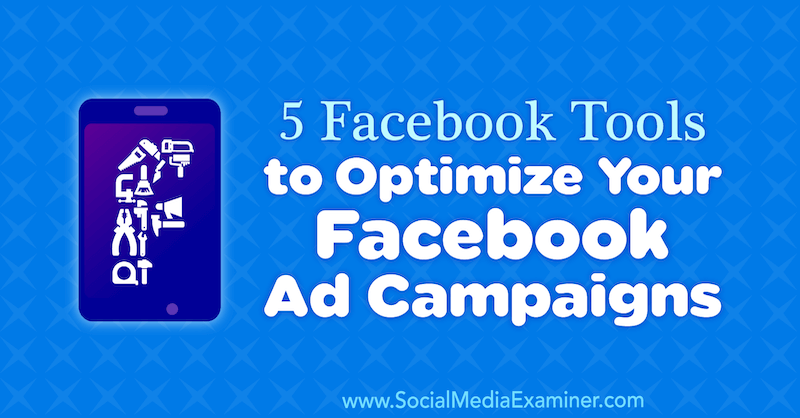
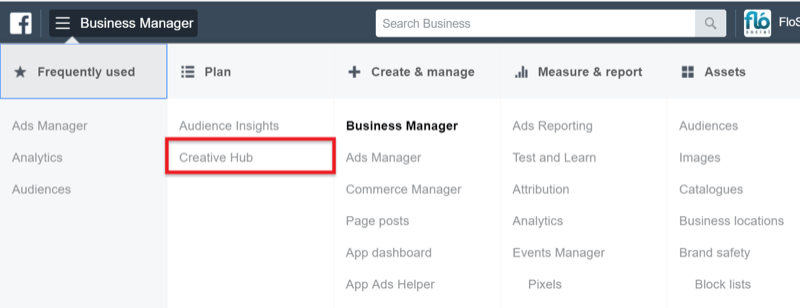

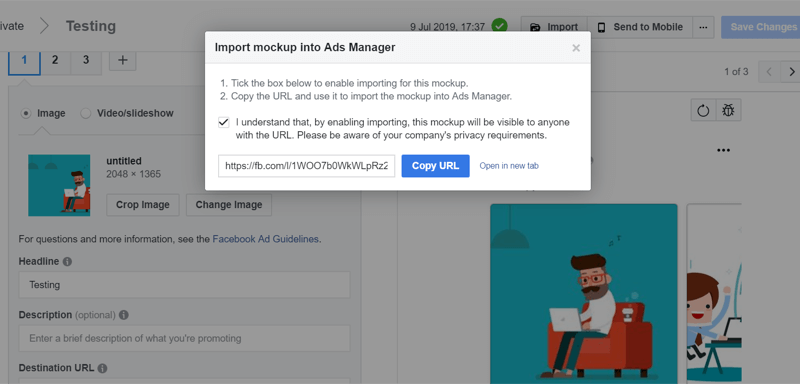



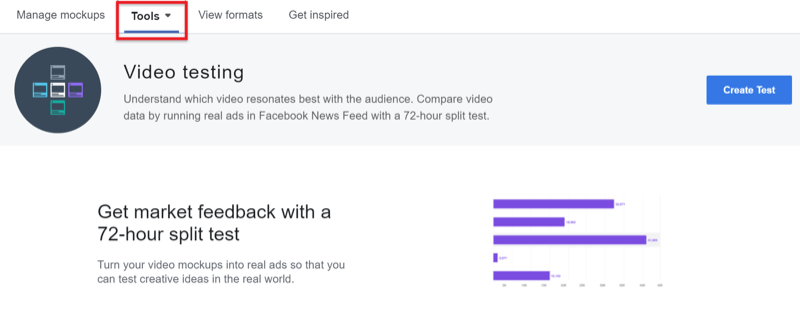







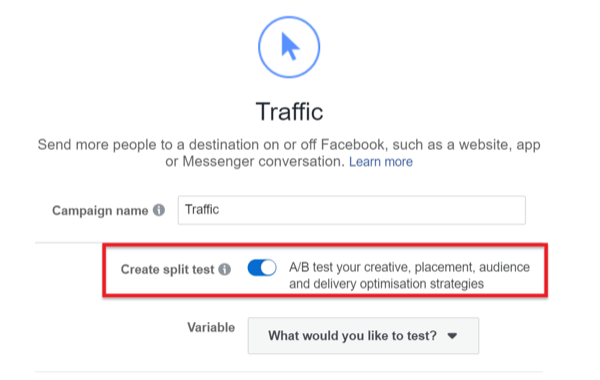

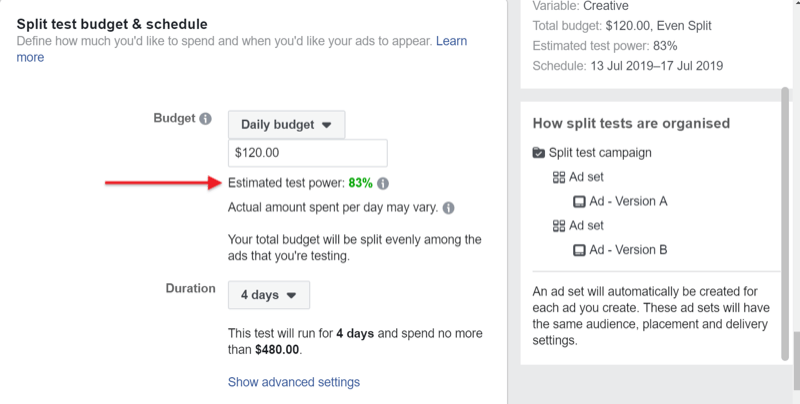

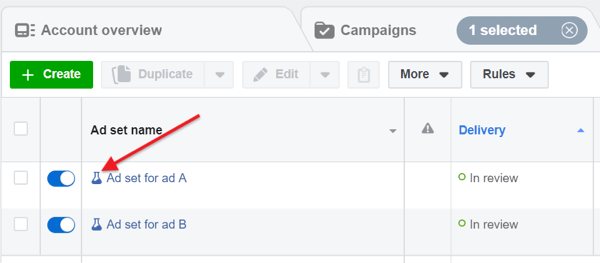
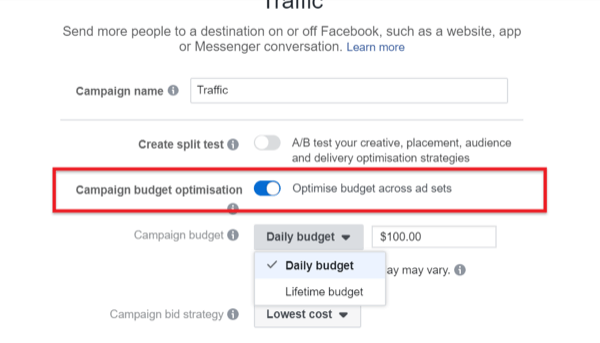
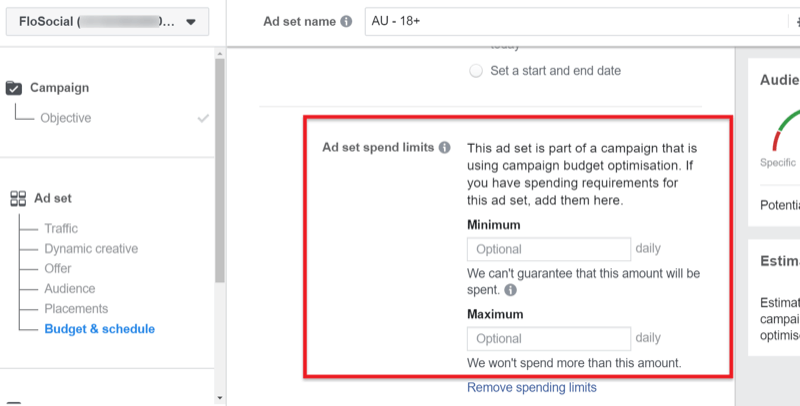

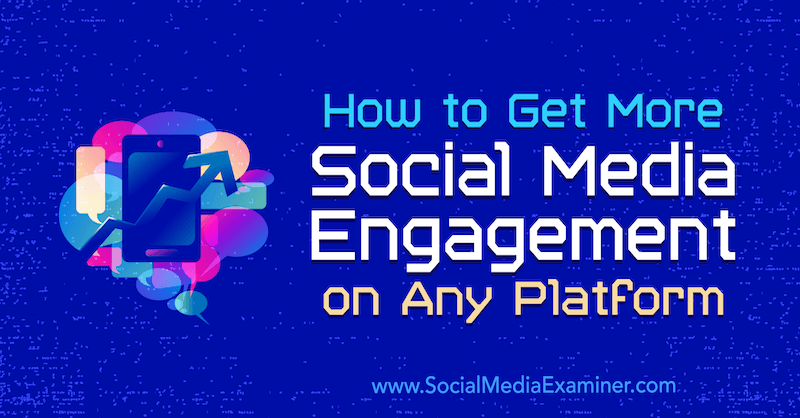
 I know, I know… You’ve heard it before. And that’s because it’s true. You must consistently create quality social media content for people to want to engage with you.
I know, I know… You’ve heard it before. And that’s because it’s true. You must consistently create quality social media content for people to want to engage with you.
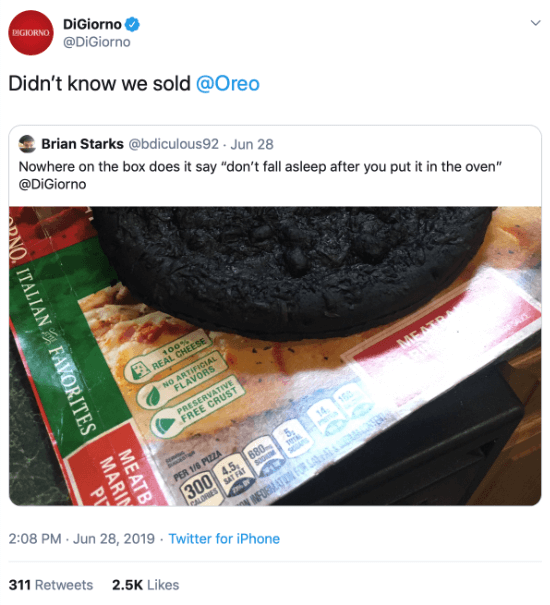






 The ideal scenario for
The ideal scenario for 

 RSS Feed
RSS Feed
